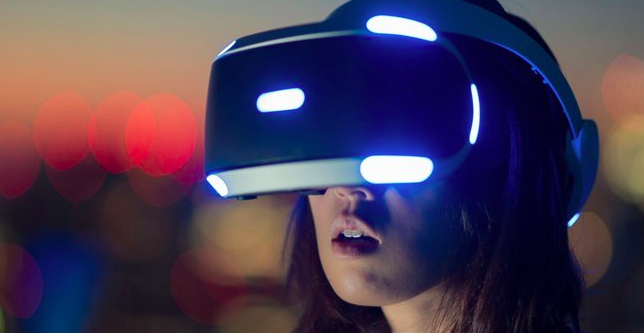4 Ways Virtual Reality Is Improving How We Teach and Train
Virtual reality (VR) is changing how instructors teach and students learn. Companies are leveraging VR to train employees and revolutionize operations. Employees now use VR to practice navigating real-world scenarios. These immersive training experiences are vital for enhancing performance and engagement.
Virtual reality training helps staff members learn lessons faster and retain skills longer. The technology allows employees with complex and dangerous jobs to enhance their skills without exposing them to risks that are inherent to their work. Additionally, workers can experiment with risky practices and techniques without placing others in danger. Ultimately, the technology reduces errors and companies’ exposure to liability.
Every employee either contributes to or detracts from a company’s success. It’s important that business leaders deploy the most effective career development resources available for training staff members. Virtual reality systems allow enterprises to test out new ideas and gauge employee responses. The deeply immersive technology helps learners absorb training faster and retain lessons longer. Employees also benefit from memorizing emotional connections during VR training.
VR connects teachers and students. It’s a cost-saving resource that allows employees to train without geographical restrictions. As a result, the technology is a critical, innovative resource for training and development in the modern business world.
These 4 recommendations show how virtual reality is improving teaching and training.
Improvement 1: Comprehension
Virtual reality is changing the way that people learn and retain information. Today, nearly anyone with an Internet connection can access digital textbooks from anywhere in the world, and teachers located around the globe can drop into a classroom made up of a disparately located student body. Search engines allow inquisitive minds to find information about virtually anything with a few taps of the keyboard. Virtual reality, however, enhances learning and engagement. It makes learning faster, easier and more satisfying. The technology is changing the learning environment by allowing people to interact intimately with digital worlds.
Improvement 2: Education
Virtual reality is expanding the digital classroom and improving how content is delivered to students. The educational experience is enhanced, with new tech innovations, and the ability to educate online, teach within classrooms, and learn with different devices. Today’s schools are combining VR and artificial intelligence to collect information that allows educators to track students’ progress. The resource allows teachers to identify areas where students might need improvement. Using this information, educators can develop personalized learning plans for each learner. The technology also allows students to spend more time on difficult lessons, and studies show that virtual reality training improves overall learning outcomes.
Improvement 3: Discovery
VR allows users to travel and explore historical eras and go on virtual field trips without getting on a plane. The visuals and access made possible by virtual reality create a new depth of knowledge and understanding. Students can visualize complex lessons, making them easier to understand. The immersive nature of VR embeds the experience in users’ memories. The technology promotes discovery and gives learners the opportunity to gain a more in-depth understanding of a topic compared to reading a book. Virtual reality also adds an emotional component to learning that is essential for forming lasting memories and increasing engagement.
Improvement 4: Collaboration
Virtual reality technology increases engagement between teachers and students. Collaboration is vital for making the most of innovative organizational structures, such as cross-functional integration, that help enterprises to maximize the benefits of fast-paced big data systems.
Academic and corporate institutions are increasingly leveraging the technology as a teaching tool. In corporate settings, VR is becoming an empowering resource for sharing information across business units. The technology enriches organizational culture, aids employees in learning about their firms and serves as a user-friendly training resource.
Innovative VR technologies are making a positive impact on how people communicate. Some of the most important knowledge gained during training comes not from hearing lectures or reading, but from interacting with new content and peers in a meaningful and engaging way. Virtual reality technology retains the social aspect of learning by allowing students to engage with each other. Using the innovation, students can express feelings and ideas using avatars and digital facial expressions that emulate emotions.
With the price point of VR equipment and software dropping rapidly, the technology is growing increasingly accessible. Virtual reality social media platforms are the latest communications innovation to emerge on the technology landscape. As more innovations emerge, the way that people learn and communicate evolves. Students are using these innovations to gain skills and absorb new ideas. The possibilities are endless for learners who are willing to open their minds to the idea of an immersive digital environment.


